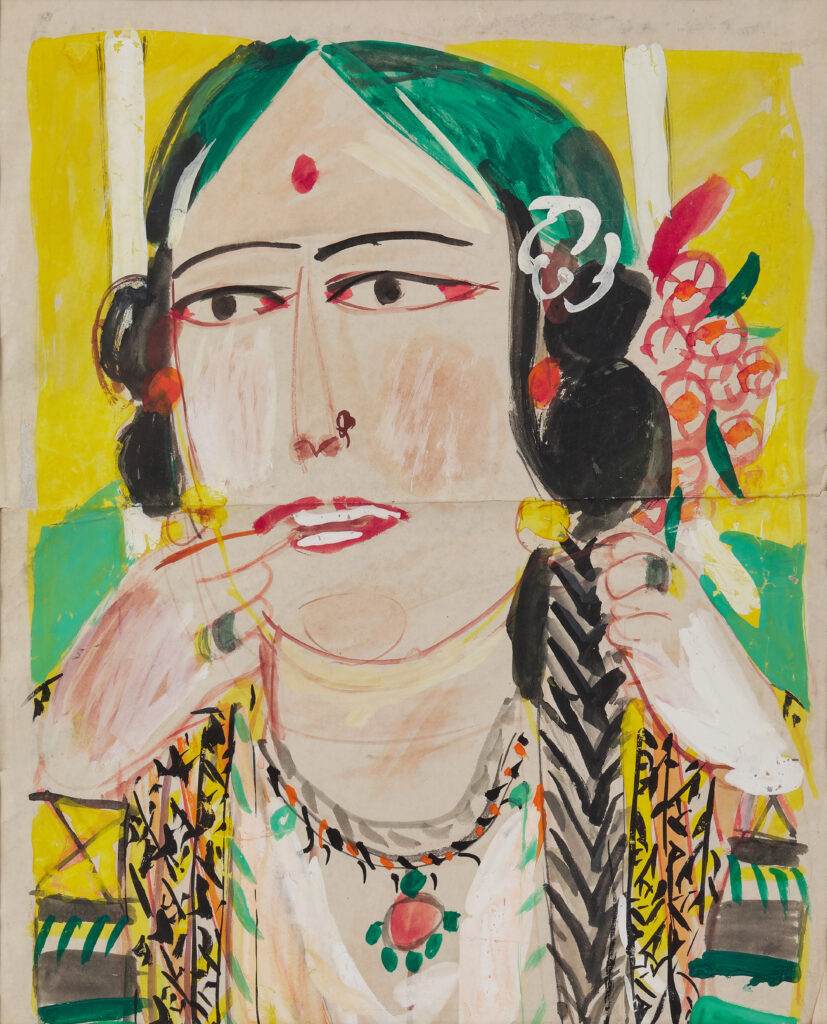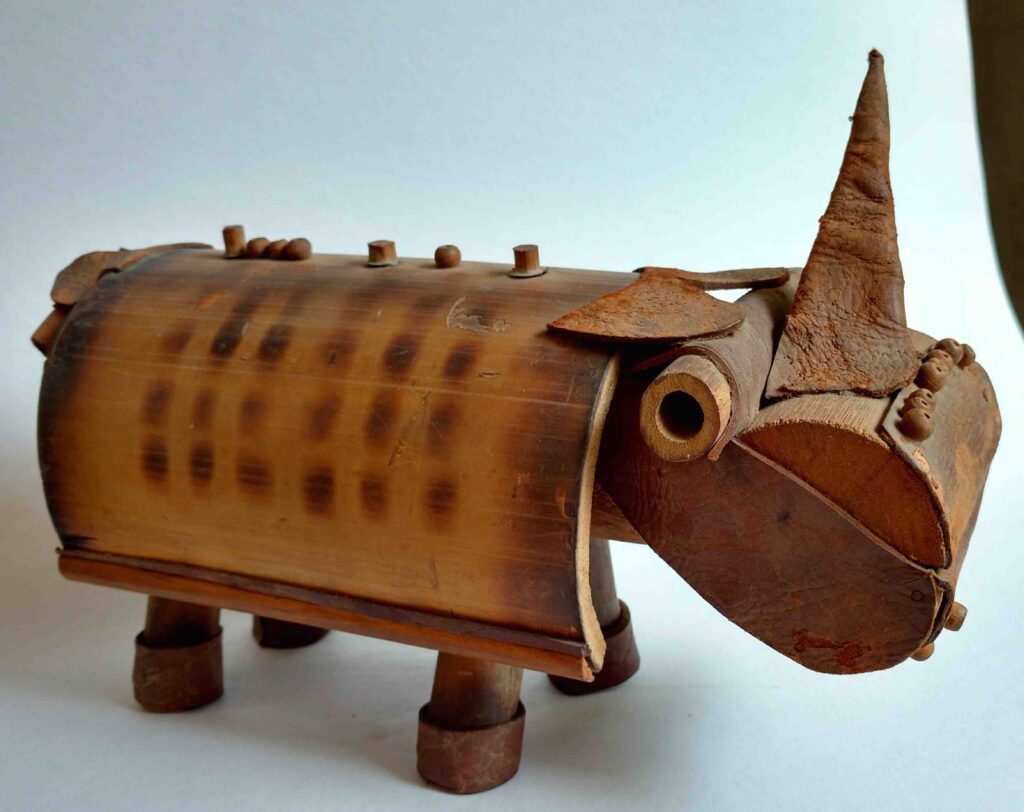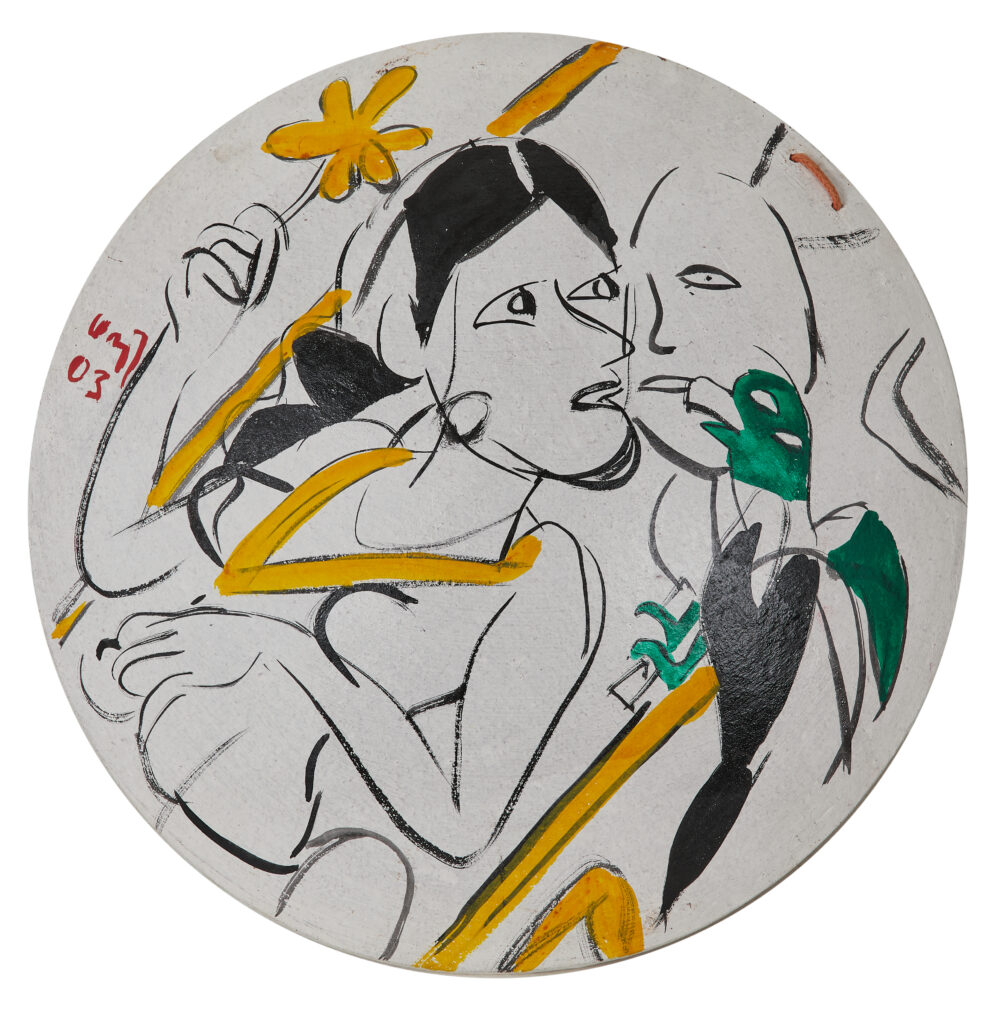Emami Art is hosting a new show — ‘One Hundred Years and Counting: Re-Scripting KG Subramanyan.‘ The exhibition is curated by Nancy Adajania. The show will preview on 5th April 2024 (4 PM to 8 PM) and is on view till 21st June 2024 (11 AM – 7 PM). The exhibition is presented in collaboration with Seagull and the Faculty of Fine Arts, MS University, Baroda. Other collaborators include the Kolkata Centre for Creativity and the KCC-Conservation Lab.
In April 2024, Emami Art will open a major research-based, retrospective-scale exhibition of Indian modernist KG Subramanyan (1924-2016). Marking his birth centenary year, this wide-ranging and critical survey, the largest in eastern India after his demise, will situate and re-assess the artist in the larger cultural scenario of postcolonial India’s unfolding modernism and affirm the continuing relevance of his practice. This exhibition will explore various aspects of his creative genius, aiming to dismantle the stereotypical readings that persist about the artist and his work.

Courtesy – Emami Art
Richa Agarwal, (CEO of Emami Arts) exclaims, “Widely revered for his profound erudition and wit, he was a versatile and multifaceted artist who made the most original contribution to modern art practices in India after Independence, creating a powerful language which is highly eclectic. This exhibition aims to present the master in a new light, establishing new relationships and opening up new avenues of discourse and debates. Besides being an artist, he was a fine writer, poet and translator; his books, including the ones he wrote and illustrated for the children, have been widely read and appreciated. I believe the artists, art lovers, and students will enjoy the exhibition.”
Widely recognized as one of the most versatile and prolific artists, Subramanyan was also a great writer, thinker and pedagogue who studied art at Kala Bhavana, Santiniketan under Nandalal Bose, Benode Behari Mukherjee and Ramkinkar Baij, and at the Slade School of Art, London. Spanning more than seven decades of his artistry, this exhibition will feature more than 200 works.

Courtesy – Emami Art
Nancy Adajania (curator and cultural theorist) notes, “The centenary of an artist as wide-ranging in his concerns and expressions as KG Subramanyan offers us an opportunity to reflect on less evident aspects of his oeuvre that may have eluded sustained critical attention. I would like to present this seminal artist, pedagogue, crafts activist and policy thinker through a shift of focus. In his work, he engaged both manifestly and in subtle ways with the legacies of Gandhi, Tagore and Nehru. Today, the past is being weaponised in the political and cultural battle. In such a state of permanent emergency, it becomes vital to revisit the practice of an artist-activist like Subramanyan. Through this exhibition, we will be looking at what is universally regarded as his political work”
The artworks in question include his early paintings from the 1950s, iconic reverse paintings on acrylic, gouaches, marker pen works on paper, postcard-size drawings (especially his perceptive impressions of his Chinese travels from the 1980s), inventive toys made for the Fine Arts Fairs at the MS University, Baroda, between 1962 and 1979, and a significant amount of archival material not seen before such as handcrafted mock-ups of children’s books, preparatory sketches for murals, and the maquettes for his powerful ‘The War of the Relics’ (2013).

Courtesy – Emami Art
About KG Subramanyan
Born in 1924 in rural Kerala, KG Subramanyan played a pivotal role in shaping India’s artistic identity after Independence. Initially studying economics, his involvement in the freedom struggle led to his imprisonment and debarment from college. He then joined Kala Bhavan, Visva-Bharati University, Santiniketan. After graduating in 1948, he taught at M. S. University, Baroda, and returned to his alma mater in Santiniketan as a professor in 1980.
Mani-da, as he was fondly called, seamlessly blended the elements of modernism with folk expression in his works that spanned paintings, murals, sculptures, prints, set designs and toys. His visual meditations contemplated human subjects and objects as distinct forms. His paintings reflected a cubist influence. Subramanyan skilfully blended romanticism with wit and eroticism, drawing inspiration from myth, memory and tradition.

Courtesy – Emami Art
About Nancy Adajania
Nancy Adajania is a cultural theorist and curator based in Bombay. She was Joint Artistic Director of the 9th Gwangju Biennale, South Korea (2012). She has curated several pathbreaking exhibitions including, most recently, ‘Woman Is As Woman Does’ (CSMVS Museum with JNAF, 2022), a first-ever intergenerational mapping of the works of Indian women artists, filmmakers and activists against the backdrop of the women’s movement in India. Adajania’s other major research-based exhibitions include the retrospectives of artists Navjot Altaf, Sudhir Patwardhan, Mehlli Gobhai and Nelly Sethna. For more than two decades, she has written on the practices of women artists of several generations by deploying a trans-disciplinary approach that melds art history, feminist theory, anthropology, activism and philosophy.
About Emami Art
Emami Art is a leading Indian contemporary art gallery and a platform for cultural production. Established in 2017 in Kolkata, Emami Art represents emerging, mid-career and established artists and organises a dynamic programme of exhibitions and public seminars. Since its inception, the gallery has curated and hosted intimate and large-scale exhibitions and regularly participates in national and international art fairs and conferences.

About Seagull
Seagull has been actively supporting and nurturing the arts in India—especially the fine arts, theatre, music and cinema since 1972. Across the years, it has promoted collaborative activity across and within the different arts disciplines, networking, exhibiting, sponsoring, designing, printing and publishing, and making available documentation and critical commentary across the arts. The Seagull Foundation for the Arts founded in 1987, supports three major initiatives: ‘PeaceWorks,’ ‘History for Peace,’ and ‘The Seagull School of Publishing.’
About The Faculty of Fine Arts, MS University, Baroda
The Faculty of Fine Arts is recognized as one of the foremost art institutes in the country and also globally. The faculty was founded in June 1950. For the first time in independent India, a programme of study was introduced to offer UG [Bachelor of Visual Art /Diploma in Visual Art, PG [Master in Visual Art /Post-Diploma in Visual Art and Master of Fine Arts [Museology] Courses and Research facilities in its various departments like Applied Arts, Painting, Sculpture, Printmaking and Art History & Aesthetics. It has a history of outstanding faculties many of whom are recipients of Padma-Bhusan and Padma Shri Awards.
Image Courtesy – Emami Art
The shape of memory: Indian gallery Emami Art is going to Art Düsseldorf





